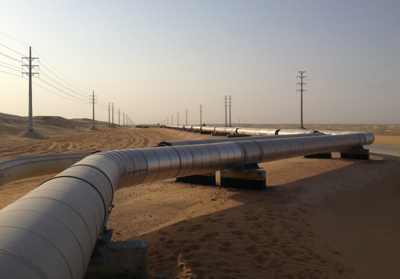Alarm Management
In many applications such as fire detection, reliable protection can be enabled with simple maximum thresholds, temperature gradients or temperature differences to average. Depending on the environmental conditions and the expected critical thresholds, these parameters can be set and tweaked individually per detection zone to reach maximum fit for the application needs.

Our proprietary SmartAlarm alarm management technology goes beyond these simple methods.
In collaboration with experts in each application field, we have developed unique methods and algorithms to detect, for example, smaller leaks, even in cases where ambient conditions are changing and the leak itself does not generate a large temperature difference. Different algorithms are available and applied depending on the details of the site conditions. SmartAlarm can even raise alarms in the case of local events, which are often not detected by standard alarm parameters or instead would lead to false alarms from hypersensitive parameters.
These algorithms analyze historic temperature variations and trends over the entire asset, such as a pipeline or power cable. Simultaneously, environmental temperature changes and influences during operation are captured. Together, these pieces of information lead to statistical algorithms, which differentiate normal ambient changes along the asset from abnormal events such as leaks. This results in reliable detection even under challenging and changing conditions, where conventional defined alarm parameters cannot be set.
Additionally, our Machine Learning Transient Alarm (MLTA) algorithms identify abnormal asset behaviors that would otherwise remain hidden within the temperature traces captured by Distributed Temperature Sensing (DTS) systems.The implementation of our unique MLTA technique allows for the isolation of thermal transients along the monitored asset, enabling fast and reliable alarming of even small irregularities by cold- and hotspots.
 With Distributed Acoustic Sensing / Distributed Vibration Sensing (DAS / DVS), our focus is on a high Probability of Detection (POD) and a low Nuisance Alarm Rate (NAR). Machine learning algorithms analyze acoustic patterns such as magnitude, spatial spread, frequency ranges, duration and repetition times, velocity, and other parameters. The system is thereby able to ignore normal background activities, while recognizing critical Third Party Intrusion (TPI) events. The DAS machine learning allows detection of various events, e.g. digging, drilling or vehicles in proximity or also events like negative pressure waves or orifice noise caused by leakages. Alarms can then be raised on defined scenarios, which are mutually agreed upon with the client. These can be scenarios such as digging or drilling, vehicles in proximity, negative pressure waves and orifice noise generated by pipeline leakages, or subsea threats such as anchoring near a power cable. With our asset visualization software SmartVision, those alarm spots can be easily monitored at a glance.
With Distributed Acoustic Sensing / Distributed Vibration Sensing (DAS / DVS), our focus is on a high Probability of Detection (POD) and a low Nuisance Alarm Rate (NAR). Machine learning algorithms analyze acoustic patterns such as magnitude, spatial spread, frequency ranges, duration and repetition times, velocity, and other parameters. The system is thereby able to ignore normal background activities, while recognizing critical Third Party Intrusion (TPI) events. The DAS machine learning allows detection of various events, e.g. digging, drilling or vehicles in proximity or also events like negative pressure waves or orifice noise caused by leakages. Alarms can then be raised on defined scenarios, which are mutually agreed upon with the client. These can be scenarios such as digging or drilling, vehicles in proximity, negative pressure waves and orifice noise generated by pipeline leakages, or subsea threats such as anchoring near a power cable. With our asset visualization software SmartVision, those alarm spots can be easily monitored at a glance.
Various alarm types can be configured, including:
- Temperature Alarms: Maximum thresholds, gradients and relative temperature changes.
- Acoustic Signal Alarms: Alarms based on acoustic patterns generated by specific events.
- Machine Learning Transient Alarms: Complex alarm algorithms to reliably identify abnormal events during operation.
- System Status and Faults: Any failure on instruments, software, or sensing fiber (fiber break).
- Alarming on External Sensors: Signal for any external sensors.
The comprehensive asset alarm management of our SmartAlarm module enables:
- Configuration of alarm zones and polygonal asset zones along the monitored asset
- Thresholds and alarm types per zone
- Transmission of alarms to peripheral equipment or superordinate management systems
- Alarm handling such as acknowledgement, history and exporting
- Lists of all connected instruments with system status and connectivity monitoring
- Further capabilities based off the client’s needs